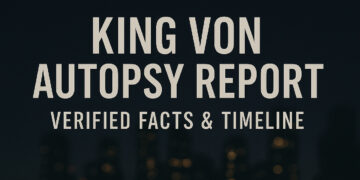In today’s competitive business environment, employee engagement has become a critical factor in driving organizational success. Performance management software plays a significant role in enhancing employee engagement by offering a structured approach to managing and developing talent. Here’s how performance management software can positively impact employee engagement:
1. Clear Goal Setting and Alignment
Performance management software enables organizations to set clear, measurable goals and align them with individual and team objectives. This clarity helps employees understand how their roles contribute to the broader company goals, which increases their sense of purpose and motivation.
- SMART Goals: Software tools often facilitate the creation of SMART (Specific, Measurable, Achievable, Relevant, Time-bound) goals, ensuring that employees have a clear roadmap for success.
- Goal Alignment: By aligning personal goals with organizational objectives, employees can see the direct impact of their efforts, leading to greater engagement.
2. Continuous Feedback and Communication
Traditional performance reviews, often conducted annually, can leave employees feeling undervalued or disconnected. Performance management software shifts the focus to continuous feedback, fostering a culture of open communication.
- Real-Time Feedback: Employees receive timely feedback on their performance, helping them to make improvements and stay motivated.
- Two-Way Communication: The software often supports two-way communication, allowing employees to provide feedback to managers and peers, thus creating a more collaborative work environment.
3. Recognition and Rewards
Performance management software often includes features for recognizing and rewarding employee achievements. Regular recognition can significantly boost employee morale and engagement.
- Recognition Programs: Tools can automate and track recognition programs, ensuring that employees’ contributions are acknowledged and celebrated.
- Incentives and Rewards: The software can manage and track various reward systems, from bonuses to non-monetary incentives, reinforcing positive behavior and performance.
4. Professional Development and Career Growth
Engaged employees are those who see opportunities for growth and advancement within the organization. Performance management software provides tools for tracking career development and planning.
- Development Plans: Employees can work with their managers to create and track personal development plans, identifying skills and training needed for career progression.
- Learning Opportunities: Integration with learning management systems can offer employees access to training and development resources, promoting continuous learning and engagement.
5. Data-Driven Insights
Performance management software provides valuable data and insights into employee performance and engagement levels. This data helps managers make informed decisions and tailor their approach to meet individual needs.
- Performance Analytics: Managers can analyze performance metrics and engagement levels to identify trends, strengths, and areas for improvement.
- Employee Surveys: Tools often include features for conducting employee surveys, gathering feedback on engagement levels, and addressing concerns proactively.
6. Enhanced Work-Life Balance
Some performance management tools include features that support work-life balance, such as flexible scheduling and remote work options.
- Flexible Scheduling: Tools that allow employees to manage their schedules can lead to increased job satisfaction and engagement.
- Remote Work Integration: Integration with remote work tools ensures that employees remain connected and engaged, regardless of their location.
Conclusion
Performance management software is a powerful tool for enhancing employee engagement. By providing clear goals, continuous feedback, recognition, and development opportunities, organizations can foster a more motivated and committed workforce. Leveraging the insights and capabilities of performance management software can lead to a more engaged and productive team, ultimately driving organizational success.



















